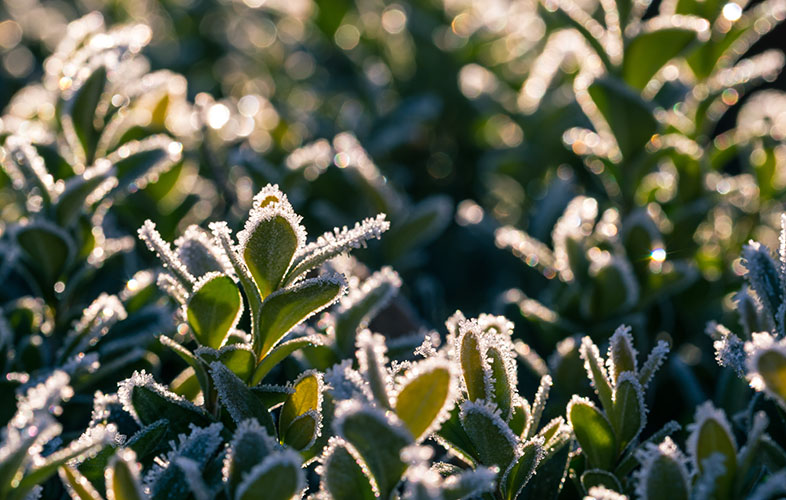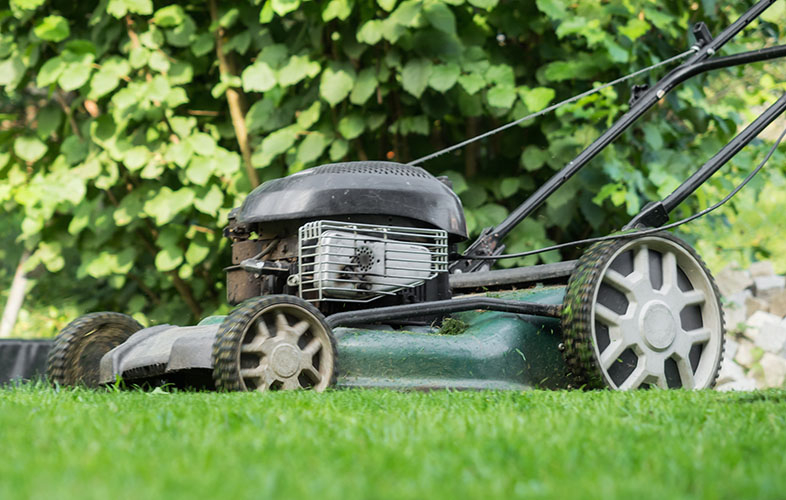How to Protect Your Outdoor Plants in Frosty Conditions
Ah, wintertime. If you live in a cooler climate, there’s no cozier season. While snowstorms rage and temperatures dip, there’s nothing quite as relaxing as curling up by the fireplace with a good book and a cup of hot chocolate. But your ice-covered trees outside don’t have that luxury. While many cold-weather trees and shrubs can withstand the cold, the reality is that frost, snow and ice can damage your plants, especially if they’re not equipped for winter conditions. Thankfully, there are things that you can do to help mitigate the damage. Here, we’ll teach you how to protect plants from frost and ice. You’ll also discover some cold-weather tips for caring for your outdoor plants and learn what TruGreen® can do to help keep your trees and shrubs healthy year after year.
At What Temperature Does Frost Occur?
Frost is a thin layer of ice that coats surfaces when temperatures dip below freezing. As such, frost occurs at the same temperature as all ice: 32oF (or lower). However, frost can develop even if your outdoor thermometer shows temperatures slightly above freezing. Overnight, cold air sinks to ground level. If that cold air hits 32oF at ground level, frost will form — even if the air above ground level (like where your thermometer is) is a few degrees warmer.
What Does Frost Damage Look Like?
Frost damage to trees and shrubs isn’t due to cold temperatures alone, rather it happens as a result of moisture during those colder temperatures. At freezing temperatures, water within the plant tissue solidifies, forming ice crystals. These crystals inevitably damage plant cells by expanding and damaging the cell membrane, though the extent of the damage can vary depending on the plant’s cold tolerance, the age, state of dormancy, and overall health of the plant.
Generally speaking, frost damage looks a bit like a burn because the plant cells die after they have been damaged by the ice crystals. Foliage may wilt or discolor, and in some cases, it could dehydrate entirely and fall off. Frost damage is less obvious on woodier parts of trees and shrubs but can manifest as visible cracking or splitting.
Will plants recover from ice or frost damage?
In most cases, yes: your trees and shrubs will recover from frost damage. Generally, the healthier the plant, the better equipped it’ll be to recover once temperatures rise again. The dead material will need to be pruned so that new growth can fill in. To help ensure your trees and shrubs get the targeted care they need throughout the seasons, we recommend TruGreen’s Tree & Shrub program. It’s an annual plan designed to give your landscape the nutrients, care and protection they need to thrive from season to season and year to year.
How To Protect Trees From Frost
Frost protection for trees is a multi-pronged approach involving both preventative and reactive measures. Here are some things you can do to protect trees in freezing temperatures:
- Water heavily prior to a freeze to help reduce how much frost can penetrate the soil.
- Surround the tree’s roots with a two to three inch layer of mulch. The mulch will act as insulation, helping to keep the soil and roots warm.
- Take care to ensure that your trees are healthy and strong prior to the winter. If weak, frozen tree branches can snap, damaging the tree and the surrounding area.
- If your trees are newly planted or have thin bark, consider using a commercial tree wrap or white trunk protectors to reflect the winter. These will reflect the sun and prevent frost cracking.
How To Protect Shrubs From Frost
Protecting shrubs from a freeze mostly hinges on shielding the branches and foliage from ice. Here are some things you can do to keep your shrubs and other landscape plants protected in cold weather:
- Water the ground around your plants well prior to a freeze to help prevent frost from penetrating the soil.
- If temperatures are expected to dip below freezing (32oF), consider covering your plants. As for what to cover plants with for frost protection, household items like blankets and towels should do the trick. Place them around your shrubs at dusk and remove them the next morning so the shrubs can be warmed by the sun. Smaller shrubs can be protected with Styrofoam cones. Tie up the branches first so the cone will fit over the top and keep a brick or rock on top to keep the cone secure.
- If your shrubs do experience frost damage, avoid removing wilted leaves until temperatures rise again. In cold weather, even small amounts of wilted leaves can help insulate the plant against cold temperatures and wind.
TruGreen Can Help Keep Your Trees and Shrubs Healthy
While winterizing your trees and shrubs can help protect them against frost damage, it’s only one part of the equation. For truly healthy plants, year-round care is needed. TruGreen can help. Our tree & shrub program will give your landscape plants the tailored care they need to grow healthy and strong — even when unexpected weather conditions arise.
Ready to enjoy your outdoor living space to the fullest? Our Tree & Shrub care plan offers comprehensive care to give your landscape the nutrients, protection, and conditions it needs to thrive.













